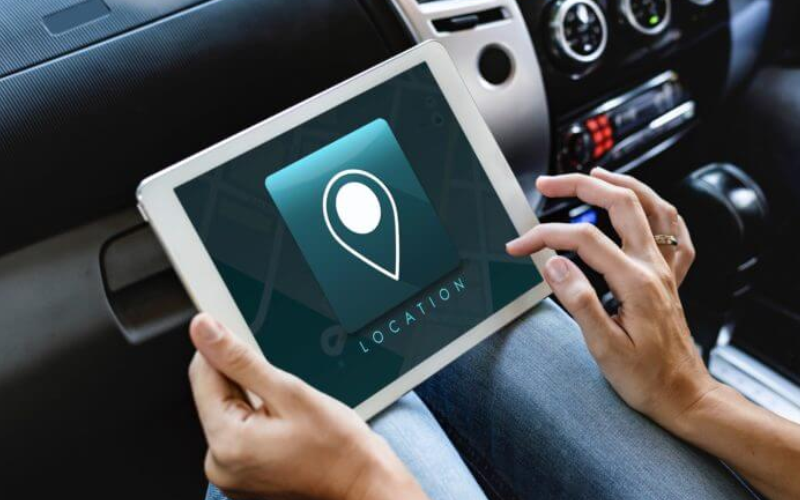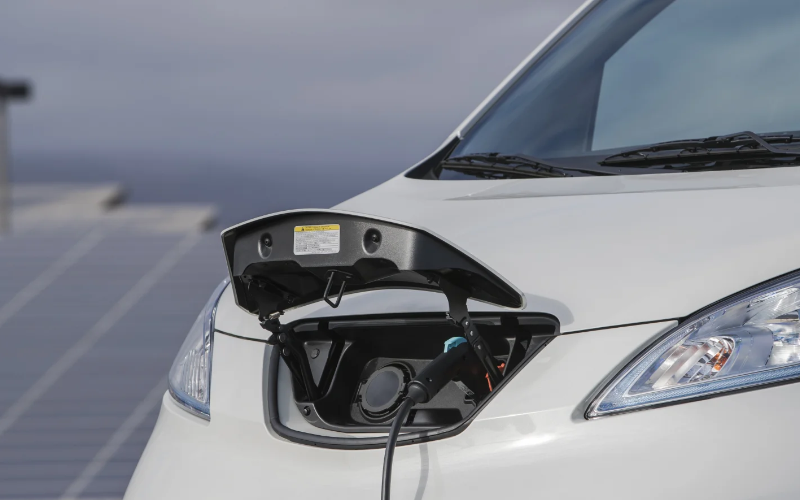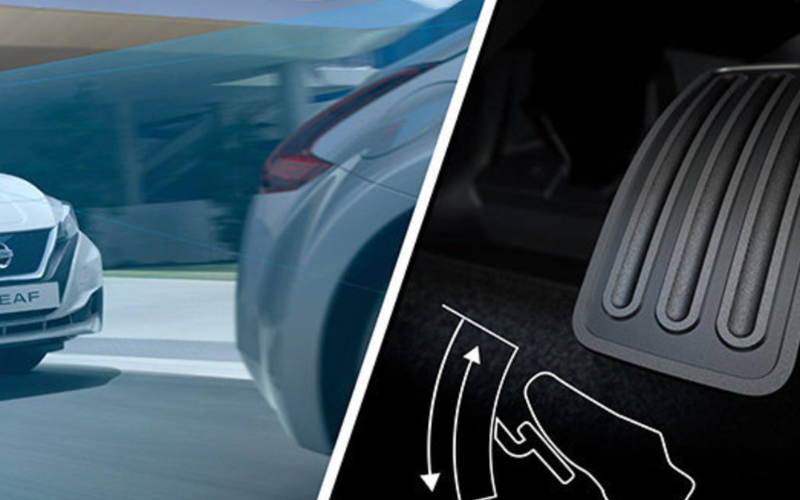We are living in the age of data. Ever since the most primitive hit trackers emerged to put on our website, we have been enamored with anything that can give us data about our web activities, our lives and ourselves. We adopted step trackers and pedometers to try and reach 10,000 a day, we attached Google Analytics to our blogs and websites to see where our traffic comes from and how much is there, and the list goes on.
Obviously there are practical and lucrative applications to this kind of data, but even when there isn’t, people are still interested in it. Fortunately, there are now ways we can get useful and meaningful data on our cars and driving thanks to a new generation of tracking technology that we can buy and plug right into our cars.
In today’s blog, we’re looking at automotive trackers, what they can do, where you can get them, what benefits they bring and more. Let’s start by clarifying exactly what kind of technology we are talking about.
Automotive Tracking Technology: The Background
This category of tracking technology refers to devices that are placed into cars in order to gather data and feed it back to some central registry or dashboard for the user to access. In precise terms, different devices work in slightly different ways to suit their professional purposes.
Some tracking technology is used on a personal level, and others might be used in the professional arena such as fleet management. There provide their users with key data and metrics that can offer the following kind of reward:
- Insight into driving behavior: speed, acceleration, braking, turning, etc.
- Comprehensive location services
- Nearby automotive services: gas stations, auto shops, etc.
- Important reminders about milestones and deadlines
- Car health monitoring: battery, component health, oil temperature, etc.
- Accident alerts
- Recall alerts
- Location of nearby roadside assistance services
- And much more…
Below is a video introducing a more basic solution to tracking technology focused on location and security -GPS trackers.
How Does the Technology Work?
The technology typically works through a tracking device that is first physically connected to the car. This is often done via the OBD-II scanner port, since that also gives insight into data about car health issues.
Once plugged in the device simply has to be synced up with some kind of online or computer/smartphone-based account through which users can access their data via a dashboard or similar interface. Once the vehicle account and the device are synced up, the data collected from the OBD-II device is then simply fed via the cloud network to the online dashboard to be viewed live, in daily reports or upon the completion of journeys by drivers.
Some systems also offer connections not just between vehicles in one family or organization, but also to local auto shops to alert them when maintenance problems are flagged up. They may also be connected to personal messaging services like WhatsApp so users on the road can share their location to their colleagues or family members when they may not have access to the dashboard.
This simple connection offers a great scope of data collection and analysis, and is already helping families and businesses to overcome worries and problems with managing vehicles.
Who Are Some of the Big Players?
The marketplace is already becoming increasingly crowded as more companies dive in to offer these types of services to their customers. Below are some of the best-known players in the arena.
Spytec
Spytec specializes in the development of GPS tracking technology with a focus on commercial application. Their flagship devices offer driver behavior feedback, emergency services and alerts, a vehicle locator function, support for multiple vehicles and more. Their hallmark is simplicity and affordability.
Orien
Orien’s devices are focused a lot on regular drivers and the health and status of their vehicle. It tracks the battery health, general car maintenance health, fuel analysis and also feeds back on driver behavior. They also include a car locator, maintenance reminders and multi-car support. Furthermore, Orien’s devices are enabled to work on EVs, too.
Vyncs
The service from Vyncs is focused on two main areas – car health and GPS car location services. It offers battery monitor, car health checker, fuel analysis, service history for the vehicle, and behavior feedback for the drivers. For location services, it offers roadside assistance, emergency service alerts and a car locator.
Pedal
Pedal is the “new kid on the block” but arguably offers a more comprehensive set of features and services. Besides all of the features mentioned from the other companies above, Pedal also includes a COVID-19 tracker, a low-price fuel finder, car valuation tool, odometer tampering alerts, insurance reminder, emissions test reminders, service alerts, cam belt inspection reminder, tax reminders, vehicle recall warnings and much more.
Since it’s the most comprehensive of the bunch, we’ll use it as our case study below to show just what this kind of technology can offer. This is not a special endorsement for Pedal, but rather simply a good example for analysis since it offers so many features in one.
Case Study: Pedal®
Pedal is a British tech startup that started its development back in 2016 but reached its initial launch phase in 2019-2020 for testing. It is positioning itself as a comprehensive offering that brings together the many features offered by other similar providers but all into one single OBD-II plug-in sensor and online dashboard system. It makes a good example to show in today’s blog to demonstrate and analyze more about car tracking technology.
Background
Pedal was founded in London, UK by IT entrepreneur Richard Eaton. The service works with a simple OBD-II sensor that plugs in to the cars, vans and fleet vehicles, EVs and soon also motorcycles, and feeds back data to an online dashboard. It offers its services both as a B2B product and a B2C product, usable by fleet managers and private car users alike.
Users just have to purchase the Pedal sensor (one per vehicle) and then connect their vehicle(s) to their main online account. The fee for the sensor covers the first year of use, after which the service charges a monthly fee to its users. The dashboard is currently available via their web platform, and a dedicated app is also being developed for more convenient access on iOS and Android smartphones.
Features
Pedal offers its users 20 main features, including a number that are unique to Pedal and not offered by any other provider. Pedal is an interesting example of tracking technology because it shows just how comprehensive one single OBD-II sensor can be when it comes to data.
The first batch of features are centered around car health and safety, they include:
- Battery monitor – alerts the user if the battery slips below 10-volts
- Car health check – looks at oil temperature, fuel level, recent mpg ratings and more
- COVID-19 hotspot tracker – alerts drivers to all UK regions worst-affected by COVID-19 and what travel restrictions they’re subject to
- Car history – a tool for buyers to know about all the car’s past maintenance and other issues
- Emergency services – alerts other account holders that one car in the account has been in a collision so other users can call and dispatch emergency services to that location
- Inspection reminder – reminds drivers 2 weeks in advance when annual government-issued inspection certificate is about to expire
- Maintenance reminders – gives text or email alerts when it’s time for routine maintenance
- Driver safety score – reads driver behavior in speed, acceleration, turning and more metrics to give an overall safety score out of 100
- Vehicle recall warning – lets users know if there is currently a manufacturer recall out on this vehicle; gets data as soon as recall is officially announced, so no waiting for letters
The second batch of features are focused on location services:
- Vehicle location – always pinpoints your vehicle’s exact location anywhere in the UK
- Low price fuel finder – highlights on map all gas stations and their current gas prices so you can find the closest, cheapest one or a better one on your route
- Roadside assistance – locates nearby assistance providers and allows you to contact them and share your location and situation
- Stolen car recovery – tracks the location of the car after it has been stolen
Other features are focused on vehicle management:
- Fuel usage report – lets you know who much fuel you used on your previous routes so you can analyze where you might be wasting fuel
- Odometer tampering check – lets you know if this vehicle has had its digital odometer tampered with (increasingly common, unfortunately)
- Multiple car support – families can put all vehicles in their household into one account
- Car value – tells you the car’s trade value, auction value, lot value, trade-in value and more
- Voice services – link the Pedal account to Amazon’s Alexa and Google Assistant.
- Tax and Insurance reminders – gives two weeks’ notice when annual road tax and insurance policy is about to expire and needs renewal
Other players that cater specifically to fleet management include Fleetio, Cartrack, Fleethub and others.
How Can Families and Companies Use This Kind of Technology?
So, above we see how Pedal works in the UK just as an example, but through that one we see just how much these apps and devices can do when they are programmed and built like that. Next, let’s consider more broadly how people will make use of this technology.
Monitoring Teen and Elderly Family Drivers
For families, one of the most worrying things they experience is when their teenage sons and daughters or elderly parents are out alone on the road. They’re worried about their teens getting into trouble, or they suspect that a teen is not respecting the family car, driving it too fast, turning it recklessly, burning up far too much gasoline, etc.
For elderly drivers, depending on their mental health, people will be worried about them getting lost or confused, or perhaps breaking down at the side of the road and not knowing what to do. For both young and old, getting into accidents is also a concern. With tracking technology, especially smart technology, other family members can be alerted via text, email, WhatsApp and other platforms when one of the cars has crashed. Sometimes, knowing instantly that something has gone wrong and being able to get emergency services on the way faster really makes the difference between life and death,
Finding Cheap Gas and Tracking Fuel Usage
Both families and companies are worried about how much gasoline they use. Even in the US where we enjoy much cheaper gasoline than in Europe, for instance, it remains a major annual expense when it comes to running a fleet of commercial vehicles or even just a private family car.
What car tracking technology can help with is keeping track of where the lowest-price gas stations are located on the routes of commercial drivers, so companies can make policy easily about drivers always locating their nearest, cheapest station before they fill up. Using tracking data, the company can also check that individual drivers are following that policy.
The same goes for tracking fuel usage. If you have a shared family vehicle used by three siblings, but it seems that the car has a lot less gas after a certain sibling uses it, then the tracking data will reveal which sibling’s journeys are responsible for using the most gasoline. Dispute can be avoided and conflict averted, and behaviors made to alter, rules made to change. Companies can track fleet employees in exactly the same way.
Maintenance and Servicing
This benefit is pretty straight forward. If car tracking technology can help remind busy families when their cars need servicing, a cam belt replacement, an oil change, new tires or something else, then that’s ideal. It’s normal for families to have multiple cars, and that means tons of different paperwork lying around the house; possibly receipts from different auto shops all getting mixed up.
In this scenario, it’s hard to keep track. If you have a tracking device connected to a chosen local auto shop, then you can get alerts for each individual car on your dashboard and keep them separate and clear. It’ll also remind you via text and email, so no more scribbling things that no one can read on a tiny desk calendar or wall chart.
It’s even harder to manage for companies with fleets. They may be able to stay on top of scheduled, routine maintenance, but with vehicles all at different mileages, and some entering service later or earlier than others, not to mention that some will experience sudden maintenance needs and breakdowns that go outside of routine, it starts to get complicated and that’s where tracking technology is useful.
Pandemic Tracking
One of the interesting things that Pedal in particular showed was how the technology might be applied in situations like the COVID-19 pandemic. If there are future outbreaks of COVID or some other disease, key data from government sources can easily be fed into the location services or to create a special section that highlights areas of the city, county, state or country that are badly affected by the outbreak.
It can help people avoid dangerous areas, and also help people with out-of-date information avoid driving to places that they shouldn’t and ending up getting in trouble with the police.
Important Reminders
Finally, car tracking technology can remind us not just of maintenance, but also about those other milestones for which have paperwork lying all over the house or office for different vehicles. If you operate a small fleet of vans, you might be forced to have them insured at different times, leading to ever shifting expiry dates. Such tracking technology can keep track and remind you in advance when it’s time to renew insurance, registration or other paperwork.
Employee Safety
For fleet management services, being able to quickly establish the location and status of employees, their vehicles and whether or not they are all safe and sound is a critical thing. Companies can face huge liabilities if improperly maintained vehicles or poorly chosen routes result in other people getting injured. That being the case, vehicle tracking technology has a lot to contribute to that. Below is a video of Australia-based Teletrac Navman, in which they explain why tracking technology can help in the realm of employee safety.
Wider Benefits of Car Tracking Technology
Beyond just families and companies using the technology, there is arguably even greater scope for benefits.
Greater Scope for Insurance Reductions
Insurance companies could easily use data from recognized car tracking technology to offer their customers cheaper premiums. Let’s say that one company recognized Pedal as an insurance-friendly monitor. They could set a driver safety score threshold to maintain throughout a year. If you achieve that, then you automatically get 15 percent off your annual premium.
Such data would really streamline the work of insurance companies, and make them more competitive and flexible, able to attract customers armed with their data by offering them great discounts.
Wider Reflection on Driving Behavior
As a society, tracking technology can give us all pause for thought regarding the way we drive on the road, the way we use fuel, the routes we take, the amount we spend on our cars annually. Data is a known catalyst for change. Many people continue doing certain things for so long because they have no idea of the impact of these seemingly innocuous or meaningless things.
It’s like telling someone that if they give up smoking, the financial savings garnered over a whole year could pay for a trip to the Bahamas. That kind of simple data is very eye-opening. We believe data from car tracking technology can also enlighten us in this way and encourage us to drive safer, smarter and greener, with less wasted fuel, time and money.
Financial Savings
With drivers receiving warnings about maintenance very early, they can get repairs and routine jobs done early and cheaply before they are worsened by more driving, resulting in a bigger bill from the mechanic.
Conclusion: Will This Be the Next Big Mainstream Automotive Tech Wave?
As with most technologies, we can safely predict it will become mainstream if it means three main criteria:
- It’s easy to use
- There is a wide market of potential users
- There are many benefits to be garnered
In our view, it’s quite safe to say that this kind of tracking technology should easily be able to find a place within the automotive mainstream. For the first criterion, the development of the product into something like a simple OBD-II plug-in device makes things very easy. A viable plug-and-play technology is very often a hit with users.
As for the other criteria, we have shown above that there is huge scope for benefit and a wide range of applications and users. Therefore, there’s no reason why this technology won’t become one of the next big gadgets that everyone wants in their car. As we touched on in the introduction, people love gaining accurate and insightful data about their own lives. Why should driving be any different? It could also be the ticket to improving driving standards, reducing fuel waste and increasing on-road safety.
One final thought: could using vehicle tracking technology be construed as intrusive? Applying it in a commercial setting where the bottom line is king is easier to defend, but how can parents easily explain fitting their kids’ cars with tracking devices? It could look like they are snooping. In any event, it seems that the potential safety benefits still far outweigh the privacy concerns among users. If you’ve been driving well and have nothing to hide, why fear it?



